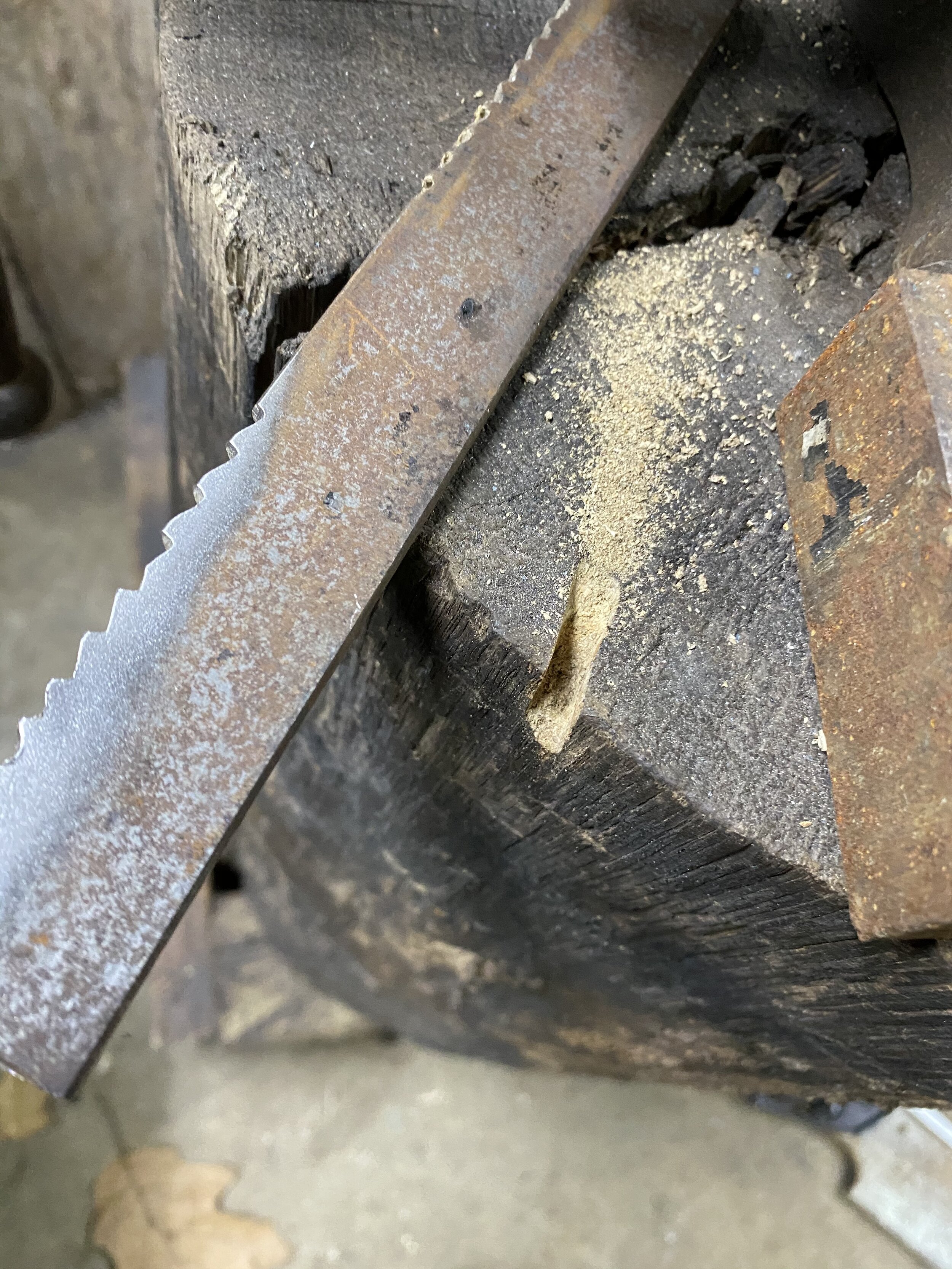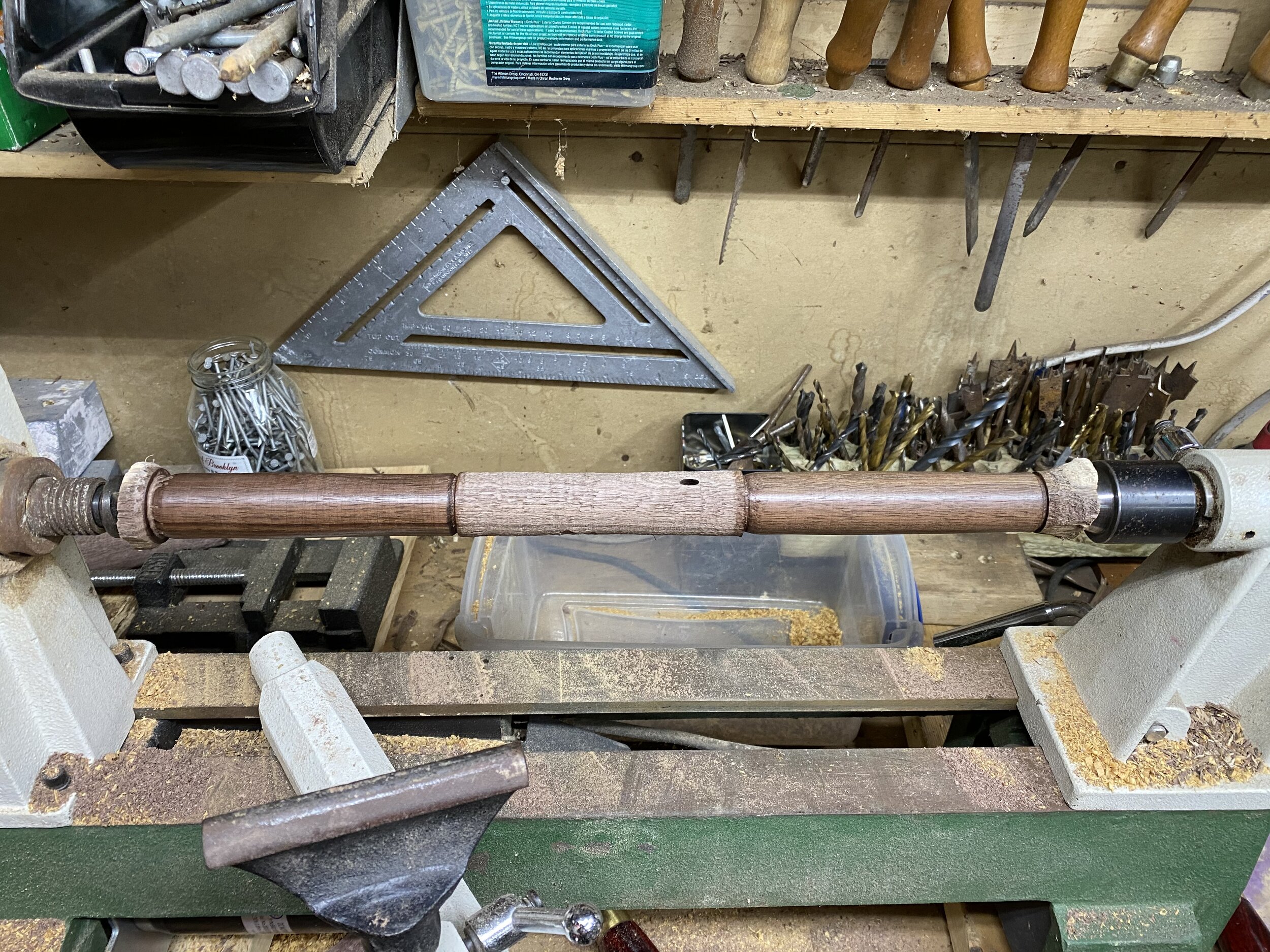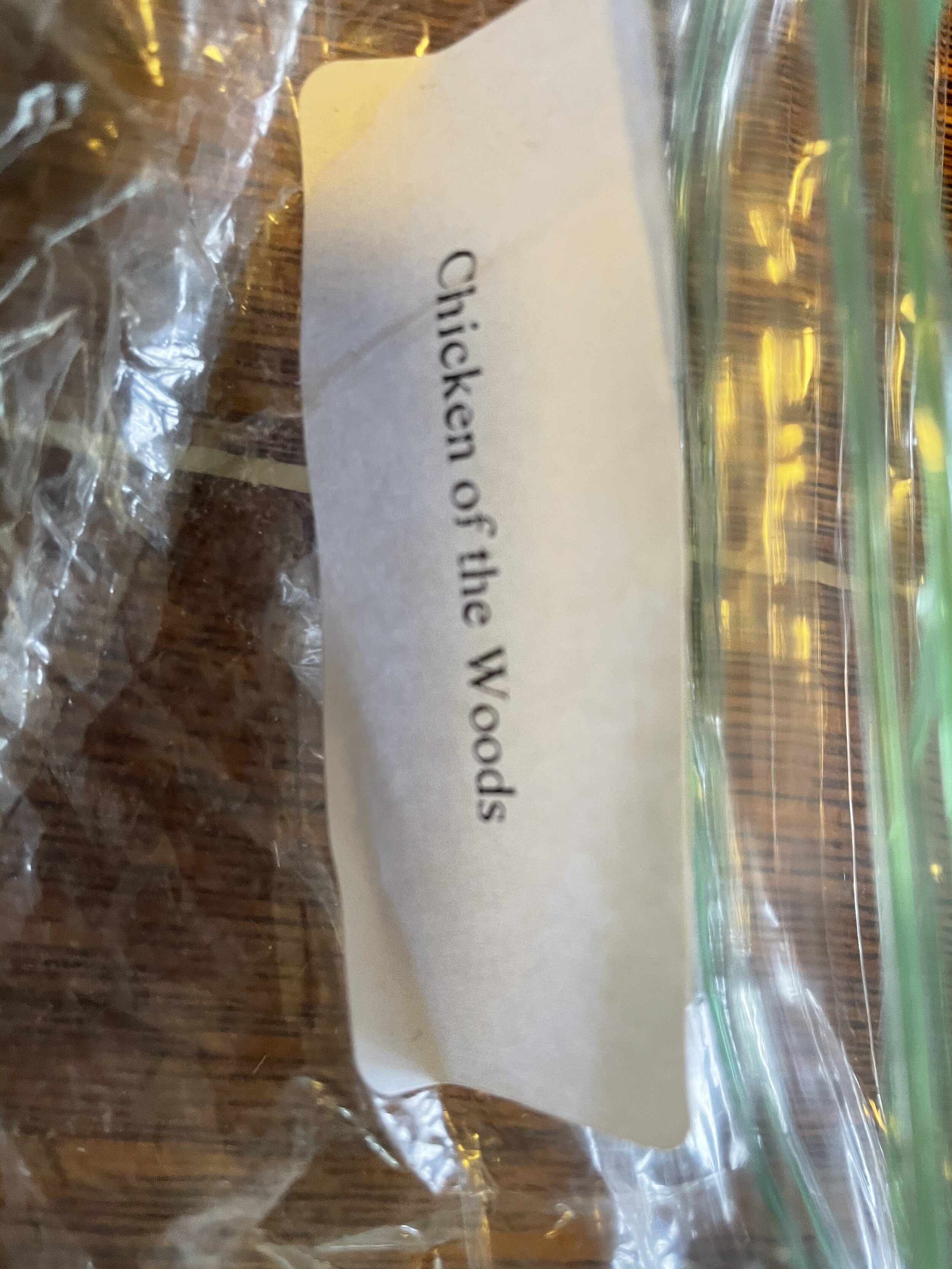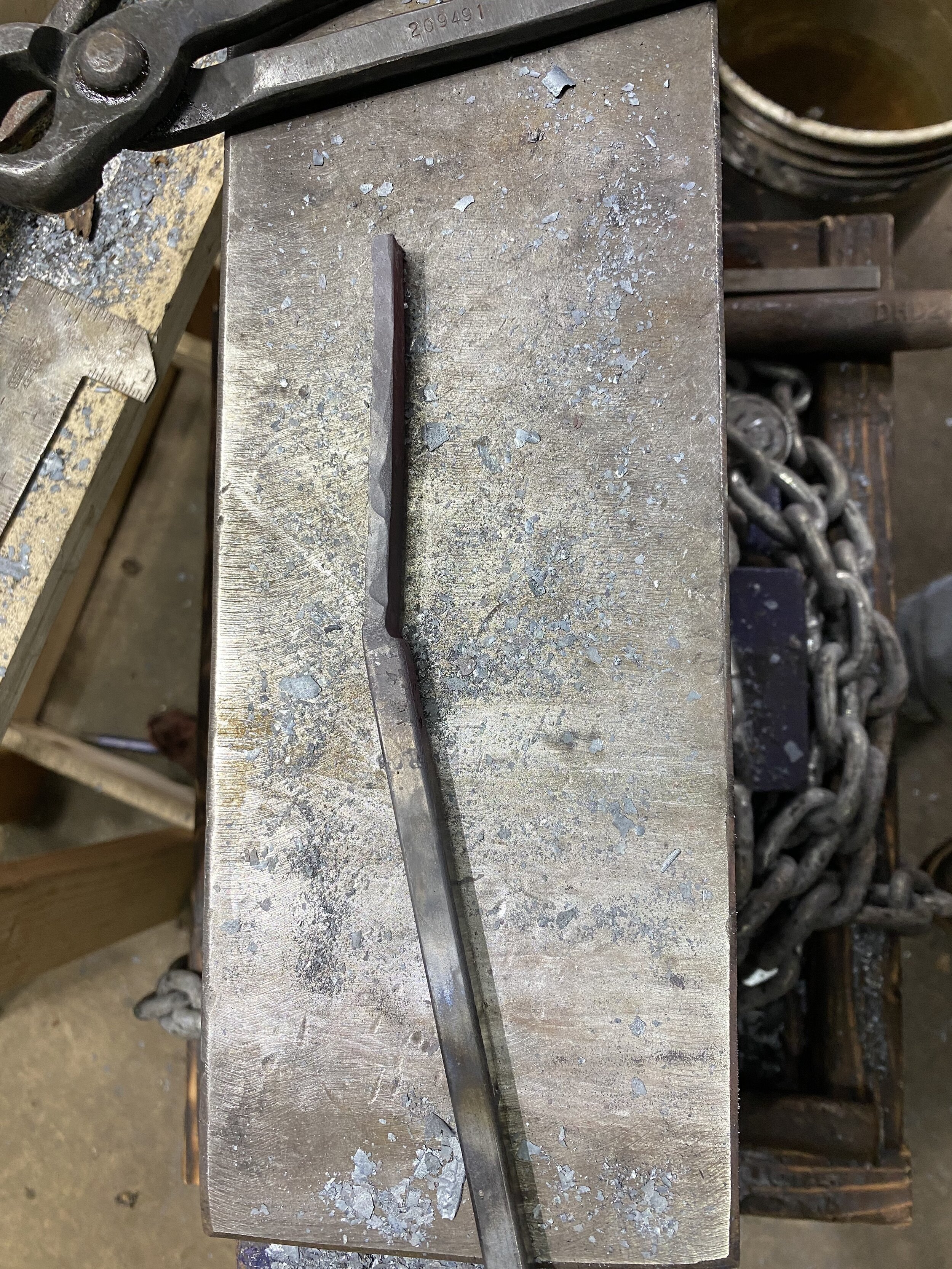Well, back to the once a month schedule, i was hoping to make it more often. Oh well. Let see what I have been up to this month. I have listed the total work done on each project, but most of it represents several different work periods. I was working several projects at once to keep from getting bogged down on any one.
Mastermyr saw
Mastermyr Adze
More Work on the drawknife
Some belt knives
Handle production
Mushrooms
Bridle Hangers
Finished Hammer #2
Amie’s Tool
Mastermyr Tongs
Mastermyr Saw
I was flipping through the book “The Mastermyr Find” by Greta Arwidsson and Gosta Berg when I came the description of the hand saw. On reading the description of the saw, i decided to make this the next object I was going to recreate. However, reading the text and then translating centimeters to inches, rather blew my mind as far as the size of this saw. i also failed to read the caption on the page it was illustrated on that the scale was 1:4 and not 1:2 as were the rest of the illustrations on that page. This thing is massive. More of a short sword with teeth than what we think of as a saw. On doing further research, it is not all that surprising., the metal that they had available was not able to handle the flexing that our modern saws are subjected to. This is why so many medieval saws were of the frame type. This however was a saw with a single handle and no support.
When I started making this saw, I wanted to make sure that the saw was all forged by me, so, even with starting with bar-stock, I made sure none of the starting dimensions were equal to the final ones. This forced me to manipulate all aspects of the saw. The point that was on the original stock was cut off to make it an even playing field.
After forging the rough shape and dimensions, it was time to figure out the teeth. The Bar in the 3rd picture represents several attempts to figure out how the teeth were cut. The texts say that they were cut 4 on a side, which i was not sure how to do with a saw this thick. My wife and I puzzled it out for quite a while till we came up with what I think is the proper configuration.
Once the teeth were all cut in, the saw performed surprisingly well. It cut a very wide cut, but it cut quite well. The next step was to add a handle. The handle that was discovered on the saw was damaged and had the tang protruding through the back and bent at a 90 degree angle. From the looks of the pictures and from what I have discovered of Viking style handles, I felt that the handle originally was much longer and the tang bent over to compensate for the missing handle wood. For this saw I took one of the handle rounds (see below) and made a long handle similar to those seen on other medieval one handed saws. In this case the handle was made of hickory, instead of ash because hickory was the toughest wood i had available.
Mastermyr Adze
Yet another piece from the Mastermyr find. This time a woodworking tool. I hope to use this on the creation of the actual Mastermyr chest. It is a scoop like tool used for hollowing out wood. This I was hoping would be a rather straight forward piece, but it has been taking a lot more out of me then I thought. I have put this piece to the fire on 2 seperate occasions and yet still I am not finished.
Once the eye was drifted, it was time to start working on the shape:
This is where I left off on this project. The amount of metal and configuration (rough shape) was all off for this project. There is much more metal here then was needed and I will end up working a bunch of it to be cut off, just to make a tool of similar size. More on this when I do more.
The Draw Knife
As happy as I was with the shape of the drawknife, i found a major drawback in the work I had done so far. With the arms bent into final shape, the tool would not fit into the quench tank. the one arm was heated up and unbent into a straight shape. The drawknife was then ground into rough shape. This was then heated to non=magnetic and quenched in vegetable oil. A file then skated across the blade indicating that it was as hard as I was going to be able to get it. This was then set aside till the belt knives were ready as well for tempering. The steps for tempering this blade can be found in that section.
Once the blade was hardened and tempered, the handles were then put in place. This was done with one of the pieces of handle rough described below, They were both turned from the same stick allowing me to adjust each one to get very similar handles. These then had pilot holes drilled and then the ends of the drawknife were heated and burnt through.
Now just waiting on a final sharpening and time to put it to use.
Assorted Belt Knives
Because I had the oil out to quench the drawknife and because the adze was driving me crazy, I decided to make some small belt knives. None of these were made following any specific extant blade, but just following a general Scandinavian utility knife pattern. For the steel for these blades, i elected to use spring steel harvested from both a snowplow spring and a garage door spring. I also made a more robust blade from a piece of a2 tool steel.
These were all:
Hammered into rough shape and the tang defined.
ground, filed and sanded into final shape
Heated to non-magnetic and quenched in vegetable oil
File checked
Tempered at 475 degrees for 1 hour.
Grinding an edge on the blade is the next step and will be going on opver the next few weeks
Handle Production
In stacking firewood from the house, i came across another fairly straight piece of hickory. These I save to make handles out of. Knowing that I had several handles coming up, i decided to go ahead and turn them down into rounds. This in only being written about because I took the photographs for future documentation that these pieces get used for.
Mushroom Mania
I am just to tired to write about all of this. If you have questions or would like this explained, please contact me.
Bridle Hangers
So for those of you who have been following along at home, this is the same bridle hook that I made for my wife once long ago and the same hook that I made in pink for one of the other girls at the stable where my wife rides. The only difference is that these were made on a massed produced schedule. Each step was done on all six then the next step started. I am afraid that I still cannot figure out how to think like a blacksmith as far as figuring out the order of operations. This pisses me off greatly, I find that the order that I decide to work on these types of things ends up with a step interfering with the next one.
Finishing Hammer #2
This was the hammer that I have been working on for the last month or so. All I did this time was take one of the handle stics and shape it into ta handle and attach it. The handle was driven on and then wedged to keep it secure. I will be trying it on one of my upcoming project to see how it does. The next step will be to make the sledge hammer which is at least twice the size of this one.
Tool for Mistress Amie Sparrow
Funny story time. A while ago (Before Christmas) I found an ad for button hole and jag cutters from the Tudor Tailor. These were basically iron chisels for cutting fabric for creating button holes or jags in fabric. These looked really cool and I wanted an excuse to try my hand at making them. (because I hate making things just for the sake of making them). So i decided to contact the one person who I knew might value them. This was Mistress Amie Sparrow. If any one would both treasure and use them, it would be her. So in my youthful exuberance, I contacted her to see if she would be my muse on attempting to make these. Alas, she had also seen the same ad and convinced her husband to procure her a set. And him being the gentleman that he is, instantly set about obtaining a set for her. Knowing that she liked the tools, but had obtained her own set was like a dash of cold water to the face of my excitement. Screw these Gosh Darn things. Mistress Amie, not knowing the depths of despair her new toys threw me into, asked me if I had ever given any though to the velvet embossers that The Tudor Tailor also produced. These were something that I had never seen and were made of techniques and materials that I had neither worked with nor had any desire to work with. To her suggestion that perhaps I could put the energy into these instead of the tool that I wanted to make was quickly shut down. I was not going to pick up another hobby involving new tools and techniques. Forget it! Not going to happen!
…..
….
I actually made it 3 days before I was studying them to figure out how they were made. It looks like they were either cast or milled brass and neither of these was I capable of. I thought of making them of cast pewter, but the heat needed to use these tool would eliminate that. Case closed, not going to happen.
…
…
So on further inspection, it looked like the head was cut to form the pattern and that was not so different from the engraving that I had done for several jewelry pieces that i had made But the scale of the cutting was so much more massive then anything I had worked on before, plus there is no way I could figure out how to attach the brass to the wooden handle.
..
..
So the brass was ordered last week and showed up just before my day off. The pattern was then drawn on the face and all of my jewelry tools were brought to bear on the problem of how to remove all the brass that was needed to produce the stamp. After a few false start, I finally found the right combination of cutters and flex shaft tools to produce a passible copy of the design. Once the design was finished, the bar was cut off about an inch from the top (picture #1). This was then drilled and tapped(first time I had ever tapped anything for a screw). For the handle, I pulled out all the stops and decided to go with a piece of marblewwod that I had purchased several years ago and was saving it for something special. I could not think of anything more special then making a tool for a good friend and so it was decided. The collar on the wood was made of copper because I did not have any other material on hand to make such a thing. I could have made a collar of steel from a thin sheet hammered and bent to shape, or do the same thing to a flat sheet of brass, but I didn’t want to waste a bunch of time on something so silly. Once the wood was turned to the proper shape(a little long, but I could not bring myself to cut the marblewood short. it was drilled and tapped to except the same screw size as the brass. A steel bolt was then beheaded to produce a piece of all-thread to screw into each end. This did not produce a seamless transition between the brass and copper collar, but I do not think that it will matter to much for the usefulness of the tool. The handle was then given a polish and the tool was ready for shipping. I cannot wait to see if it works and what wonderful creations Mistress Amie will make from it.
Mastermyr Tongs
So, time for my next tool from the Mastermyr find. The Tongs.
Random Pictures from the Forge
Well, this has been a ton of shite. I started writing this on Monday, and plan on publishing it on Tuesday. I am not sure how much of all that I have to say on all of this I am going to get to. This part is being written at 1:00 am Monday night and I am just about done. It is driving me nuts all of the things that I need to say about each project that I will not get a chance to cover. Only a small portion of what I wanted to write about has been written and I don’t know how much fill in I will be able to get done tomorrow. If each project has sparkling detail and volumes of information, you know that I was worrying needlessly. Eithe rway, if anyone had made it this far, thanks for sticking it out.
Your servant,
Grimm
The items I have made from the Mastermyr find:
The chest lock and key
the tongs
the hand saw
The Auger
Trivet #1
Trivet #2
Hammer #1
Dog’s head Hammer
Hammer #2
Nail Header
Hack saw (not pictured)












































































































































